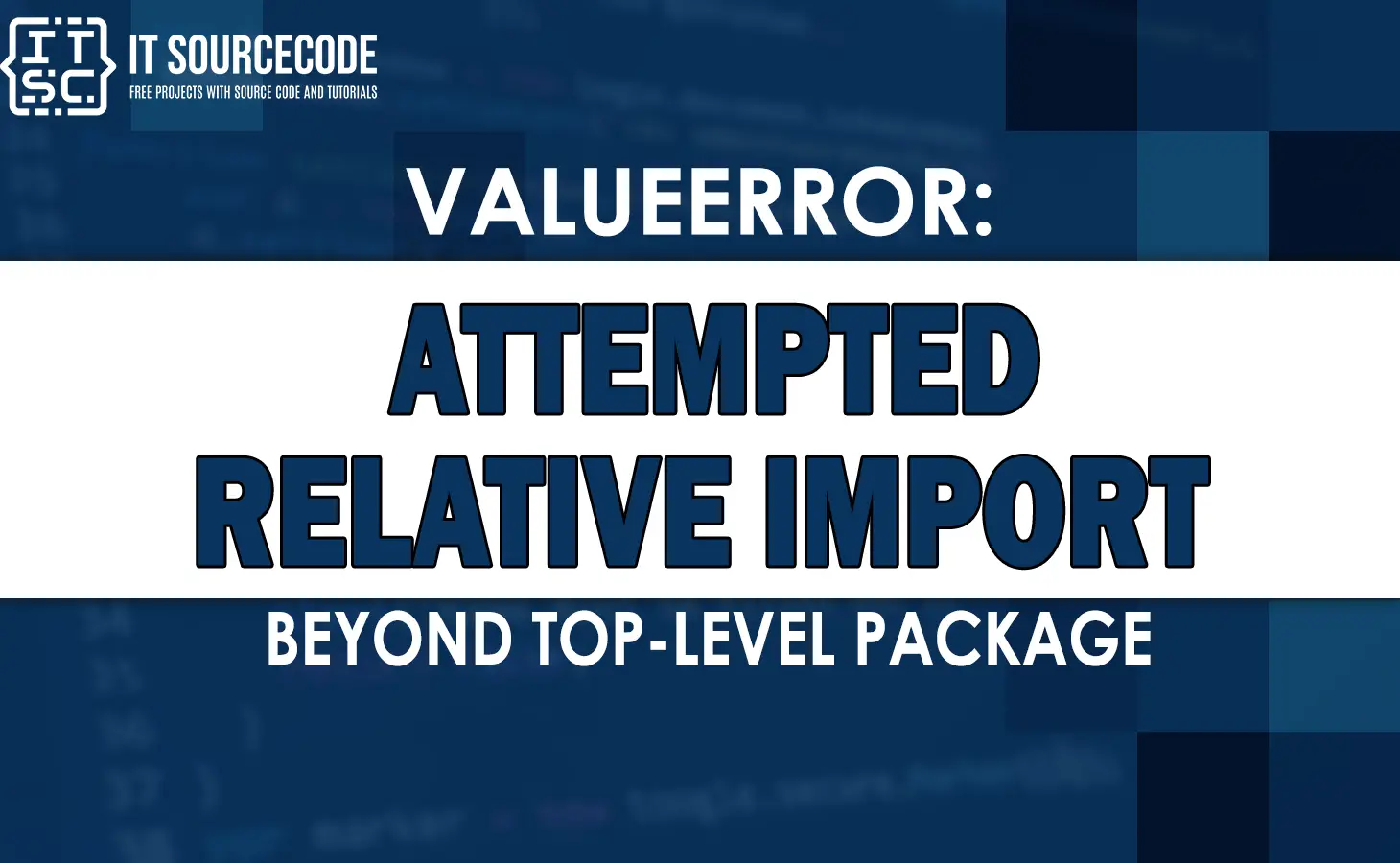In running a program, encountering errors is a common issue. One of the errors that developers often come across is the ValueError: Attempted Relative Import Beyond Top-Level Package.
This error occurs when a Python script attempts to perform a relative import that goes beyond the top-level package.
In this article, we will discuss in detail this error, how it occurs, provide solutions to resolve it, and offer additional insights to help you better understand and resolve this issue.
Why Does the Error Attempted Relative Import Beyond Top-Level Package Occur?
The attempted relative import beyond top-level package error usually occurs because we try to import a module or package from a location that is not directly within the scope of the current package or module.
Common Causes of the Error
Here are the common causes of the error:
1. Incorrect Package Structure
For example:
my_project/
main_package/
__init__.py
script.py
sub_package/
__init__.py
module.pyIn script.py, we attempt to perform a relative import to import module.py located in the sub_package directory.
However, if we improperly use an incorrect relative import statement like:
from ..sub_package.module import some_functionThe “ValueError: Attempted Relative Import Beyond Top-Level Package” will be raised. This occurs because the relative import tries to go beyond the top-level package (project) boundary.
2. Incorrect usage in scripts
We assume that we have a script named script.py located in the main_package directory. If the script consists of the following:
from .module1 import some_functionThe “valueerror attempted relative import beyond top-level package” will be raised because the relative import tries to reference a module outside the top-level package.
These examples explain a common scenarios where the ValueError occurs due to incorrect relative imports.
Solutions to Fix ValueError Attempted Relative Import Beyond Top-Level Package
Solution 1: Adjusting the import statement
To resolve the ValueError, we can adjust the import statement to use an absolute import instead of a relative import.
Replace the relative import with an absolute import that specifies the full package path:
from main_package.module1 import some_functionBy using an absolute import, we can ensure that the import statement references the correct module within the top-level package, to eliminate the ValueError.
Solution 2: Modifying the package structure
If the package structure is incorrect or incompatible, you need to change it to resolve the ValueError. Make sure that the relative import statements that comply with the proper project structure.
In the earlier example, you could change the package structure as follows:
project/
main_package/
__init__.py
module1.py
tests/
__init__.py
test_module1.py
By aligning the package structure correctly, the relative import in test_module1.py will no longer result in the ValueError.
Solution 3: Using absolute imports
As a best practice, we can use absolute imports whenever possible, especially in complex projects. Absolute imports provide simplicity and avoid confusion regarding the package structure.
To use absolute imports, we can define the full package path in the import statement:
from main_package.module1 import some_functionBy using absolute imports consistently, we can prevent the “Attempted Relative Import Beyond Top-Level Package” from occurring.
Solution 4: Adjusting the PYTHONPATH
Another solution to solve the error is by adjusting the PYTHONPATH environment variable.
The PYTHONPATH variable allows you to define additional directories to be searched when importing modules.
By adding the path to the top-level package directory to your PYTHONPATH, it will enable Python to locate the modules correctly.
To adjust the PYTHONPATH temporarily, you can use the following command in your terminal before executing your script:
export PYTHONPATH=/path/to/top_level_package:$PYTHONPATHYou can Replace /path/to/top_level_package with the actual path to your top-level package directory.
Best Practices to Avoid ValueError in Relative Imports
To avoid encountering the ValueError related to relative imports, follow these best practices:
- Properly structuring your packages
- Using absolute imports in specific cases
- Using relative imports cautiously
Additional Resources
- Valueerror: cannot merge a series without a name
- How to Solve the Python ValueError
- Valueerror too many values to unpack expected 3
Conclusion
In conclusion, the “ValueError: Attempted Relative Import Beyond Top-Level Package” can be encountered when working with relative imports in Python.
This error occurs when an import statement attempt to reference a module or package outside the top-level package boundary.
By adjusting import statements, modifying package structures, and using absolute imports, we can resolve the ValueError and ensure correct module referencing.
FAQs (Frequently Asked Questions)
The error occurs when a Python script attempts to perform a relative import that goes beyond the top-level package.
This can happen due to incorrect package structures, executing scripts outside the package scope, or using invalid import statements.
Yes, relative imports can be used within the same package. They are intended for importing modules or sub-packages within the current package scope.

